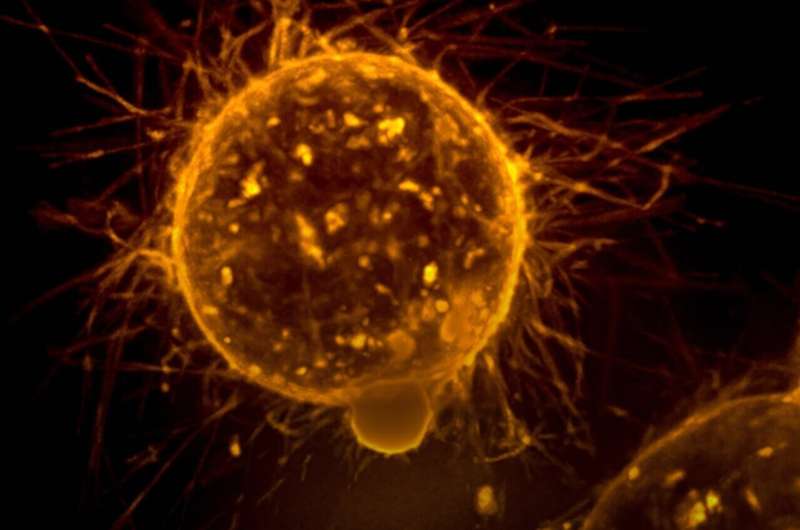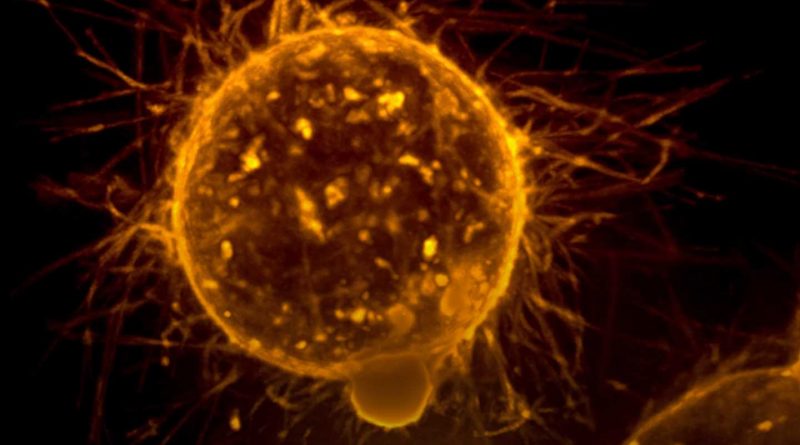posologia ciprofloxacino 500

For nearly a century, scientific evidence has shown that the use of specific bacteria to target cancer tumors and trigger immune responses in patients can be effective in combating cancer. Such bacterial therapies have proven successful in targeting and treating bladder cancer with minimal damage to healthy tissue, which commonly occurs with traditional radiation and chemotherapy treatments.
Now, in a study that further investigates and hones the use of these bacterial-based cancer treatments, researchers from Johns Hopkins Medicine have developed a novel method to accurately image the way bacterial therapies move and how they target breast cancer.
The full paper, published in a supplement of the October issue of The Journal of Infectious Diseases, adds to current and ongoing research in bacterial-based cancer treatment clinical testing and development.
This research team at Johns Hopkins Medicine previously created an imaging technology to accurately observe bacterial cancer treatments in the body. The technology, called 18F-Fluorodeoxysorbitol or 18F-FDS PET, is a molecule that is taken up, lyrica and thyroid or absorbed, by bacterial cells in the body. Once in the bacterial cells, the molecule makes the cells light up in PET and CT scans, allowing for an accurate picture of where the bacteria groups in the body.
“We are able to use this imaging technology to track the bacteria and make sure the bacterial infection is not sitting in other healthy tissues,” says study author Sanjay Jain, M.B.B.S., M.D., professor of pediatrics at the Johns Hopkins University School of Medicine. “The technology is helpful in developing these bacterial therapies for cancers, which is what we showed here with the bacteria Yersinia enterocolitica and breast cancer.”
In experiments using their imaging technology with breast cancer models in rodents, the research team tested if a special strain of Y. enterocolitica bacteria could successfully target breast cancer tumors and could be imaged using their 18F-FDS PET scanning methods.
First, researchers administered the Y. enterocolitica through intravenous injections into mice subjects with breast cancer. The subjects were then additionally injected with the 18F-FDS tracer to prepare for imaging. Following the injections, the subjects were scanned using PET and CT imaging over the course of different intervals, including one, five and 10 days.
The scans revealed that not only did the Y. enterocolitica strain accurately target and colonize in the breast cancer tumors, but also the 18F-FDS tracer allowed the bacteria to be accurately imaged in the subjects’ bodies.
“Being able to use PET imaging to visualize tumor-targeting bacteria will enable faster development and implementation of this innovative tool for oncologic patients,” says first author Alvaro Ordoñez, M.D., assistant professor of medicine at the Johns Hopkins University School of Medicine.
“Bacterial treatments for cancer are still in their infancy,” says Jain. “Before moving more of these treatments into the clinic, proof-of-concept studies such as these are necessary.”
More information:
Alvaro A Ordonez et al, Imaging Tumor-Targeting Bacteria Using 18F-Fluorodeoxysorbitol Positron Emission Tomography, The Journal of Infectious Diseases (2023). DOI: 10.1093/infdis/jiad077
Journal information:
Journal of Infectious Diseases
Source: Read Full Article
